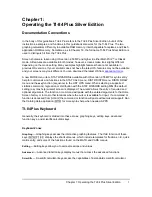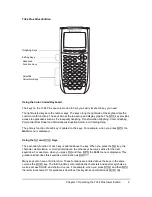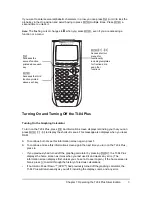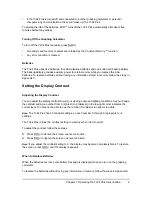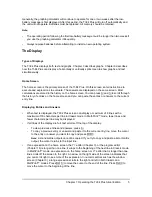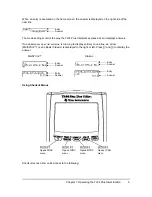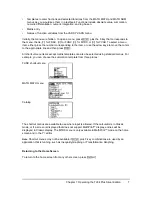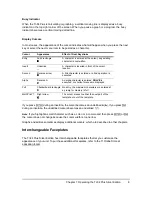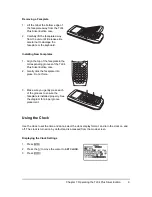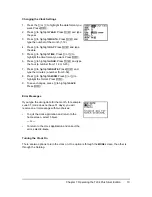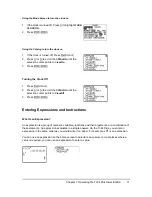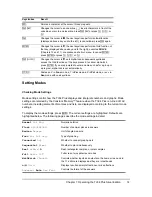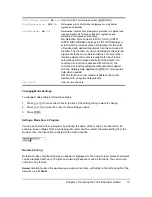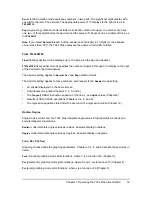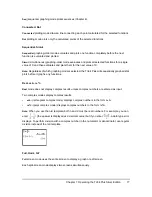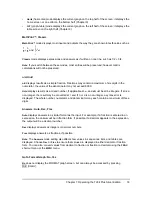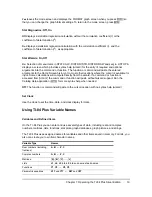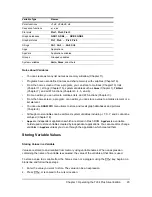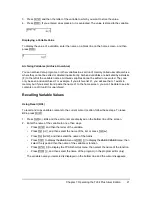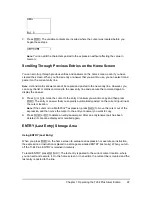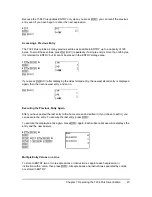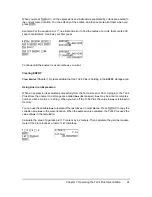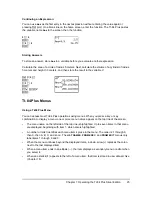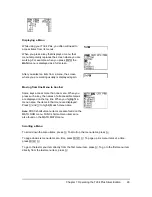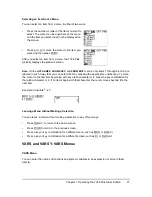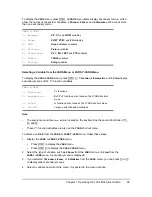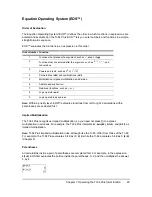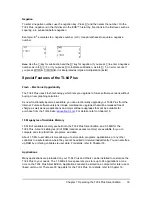
Chapter 1: Operating the TI-84 Plus Silver Edition
15
Changing Mode Settings
To change mode settings, follow these steps.
1. Press
†
or
}
to move the cursor to the line of the setting that you want to change.
2. Press
~
or
|
to move the cursor to the setting you want.
3. Press
Í
.
Setting a Mode from a Program
You can set a mode from a program by entering the name of the mode as an instruction; for
example,
Func
or
Float
. From a blank program command line, select the mode setting from the
mode screen; the instruction is pasted to the cursor location.
Normal, Sci, Eng
Notation modes only affect the way an answer is displayed on the home screen. Numeric answers
can be displayed with up to 10 digits and a two-digit exponent and as fractions. You can enter a
number in any format.
Normal
notation mode is the usual way we express numbers, with digits to the left and right of the
decimal, as in
12345.67
.
GoTo Format Graph:
No
Yes
Shortcut to the Format Graph screen (
y .
)
StatDiagnostics:
Off
On
Determines which information is displayed in a statistical
regression calculation
StatWizards:
On
Off
Determines if syntax help prompts are provided for optional and
required arguments for many statistical, regression and
distribution commands and functions.
On
: Selection of menu items in STAT CALC, DISTR
DISTR, DISTR DRAW and seq( in LIST OPS displays a
screen which provides syntax help (wizard) for the entry
of required and optional arguments into the command or
function. The function or command will paste the entered
arguments to the Home Screen history or to most other
locations where the cursor is available for input. Some
calculations will compute directly from the wizard. If a
command or function is accessed from
N
the
command or function will paste without wizard support.
Run the Catalog Help application (
Œ
) for more syntax
help when needed.
Off
:
The function or command will paste to the cursor
location with no syntax help (wizard).
Set Clock
Sets the time and date

